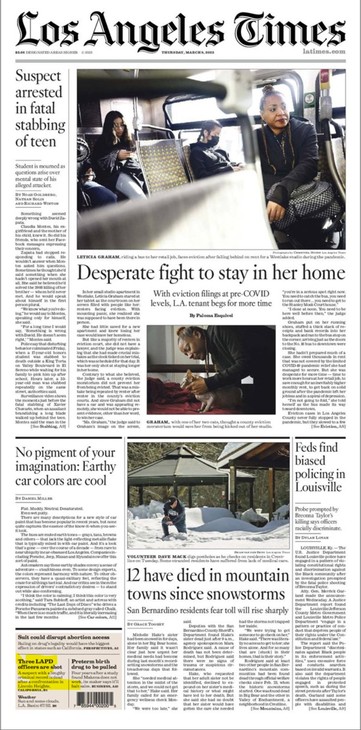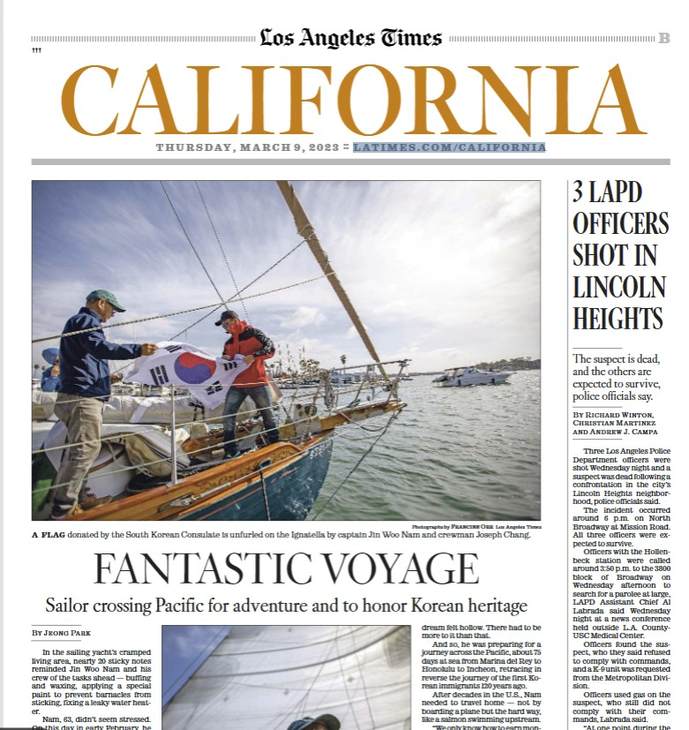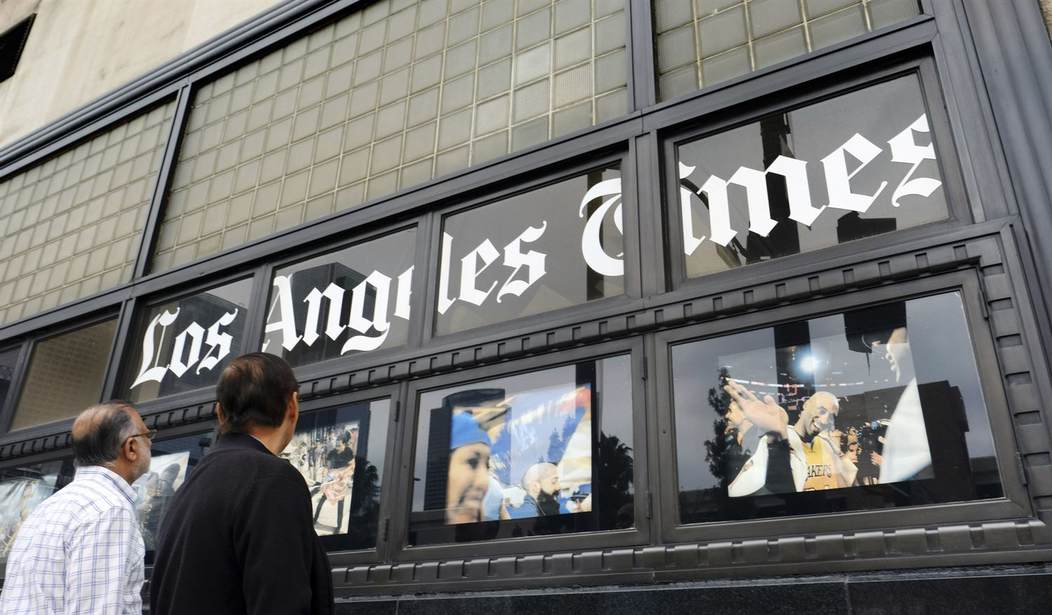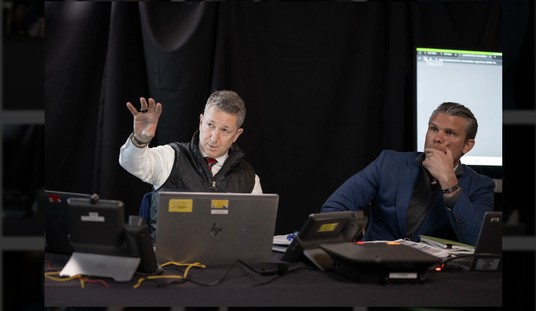Newspapers, the ones that used to appear in your driveway every morning, the ones you could pick up and turn the pages and read without the aid of an electronic device, those relics of a bygone age, they may be dying, but the print edition of any paper is still a reliable barometer of its editors’ priorities. The front page is the most prized real estate, with reporters vying to have their stories appear in that coveted space on A-1. Just as one can get a good idea of what is important to the editors by what runs on the front page, what doesn’t appear there is equally revealing, if not more so.
Wednesday evening, radio and television stations in Los Angeles gave extensive coverage to an incident in which three LAPD officers were shot while trying to arrest a wanted felon. On some local television stations, regular programming was interrupted to carry live coverage as a small army of police officers and sheriff’s deputies converged on a Lincoln Heights neighborhood where, after several hours, a SWAT team found the suspect dead.
The three officers were reported to be in stable condition, an outcome for which we can be grateful, but the fact that the officers survived doesn’t lessen the magnitude of the story, which held the attention of L.A.’s electronic media through the evening and into the next day. So I was curious to see how the story would be covered in the Los Angeles Times, which, as I have pointed out many times before (here and here, for two recent examples), is proudly and sometimes dishonestly hostile to law enforcement in general and the LAPD in particular.
And the Times did indeed sink to my expectations. On the paper’s front page Thursday morning, the only reference to the shooting was at the bottom-left corner, an invitation to turn to the second section for the story.

The stories deemed worthy of front-page coverage were these: the arrest of a suspect in the murder of a teenager, the deaths of 12 people stranded by heavy snowfall in the local mountains, a Justice Department report alleging biased policing in Louisville, the recent proliferation of “earthy” car colors, and a woman’s struggle to avoid eviction after falling behind on her rent.
Related: The Police Pursuit Conundrum
Surely the arrest of a suspect in a horrific crime deserves front-page coverage, as do the deaths of 12 people owing to record snowfall, but a fluff piece about car colors? And the hard-luck story about the woman facing eviction may make for interesting reading, but is it worthy of five columns above the fold on the front page, including two photographs? On the jump page are four more photographs to accompany the story that runs to more than 2,400 words.
Even after being relegated to page B-1, the story of the wounded officers was given inferior placement to one about a man sailing across the Pacific Ocean “to honor his Korean heritage.”

The Korean-American sailor is given four columns above the fold, including two photographs. Another photo appears on the jump page, and the story runs to more than 1,600 words. By contrast, the wounded police officers get one column and about 700 words; the lone photo accompanying the story appears on the jump page.
But the most galling editorial decision displayed in Thursday’s L.A. Times is the one to feature on the front page the Justice Department’s report on allegations of racial bias in the Louisville Metro Police Department. Whatever the merits of the Louisville story, are the purported deficiencies of a police force 1,800 miles from Los Angeles more important to the Times’s readers than a gun battle in which three LAPD officers were wounded? The editors at the Times think so. One can imagine the decision-making process: “Yes, we must cover the LAPD shooting, but we will place the story on B-1 and reserve the prized space on A-1 to remind our readers that the police in Louisville (and by implication, police officers everywhere) are racists.”
Credit the Times reporters (three share the byline) for including information on the shooting suspect’s criminal history, but even this left important questions unanswered. In the online version of the story, it is reported that the dead suspect, Jonathan Magana, had a “lengthy criminal record” and was arrested in January for battery on a police officer and unlawful possession of a firearm. Was Magana out of custody owing to D.A. George Gascón’s policy of allowing charged defendants to go free without posting bail? The story doesn’t say, and I suspect the question will go unasked at the Times.
On the same note, the Times informs us that in February 2020 Magana was sentenced to four years in prison and another year in county jail after being convicted of two counts of robbery. Why is it that in March 2023 he was out and about after being sentenced in 2020 to five years in custody? We aren’t told, nor are we likely to be, lest the answer reflect poorly on Gascón, whom the Times endorsed for election.
I’m old enough to remember when the Los Angeles Times was a fair and honest newspaper. I doubt I’ll live long enough to see it become one again.










Join the conversation as a VIP Member